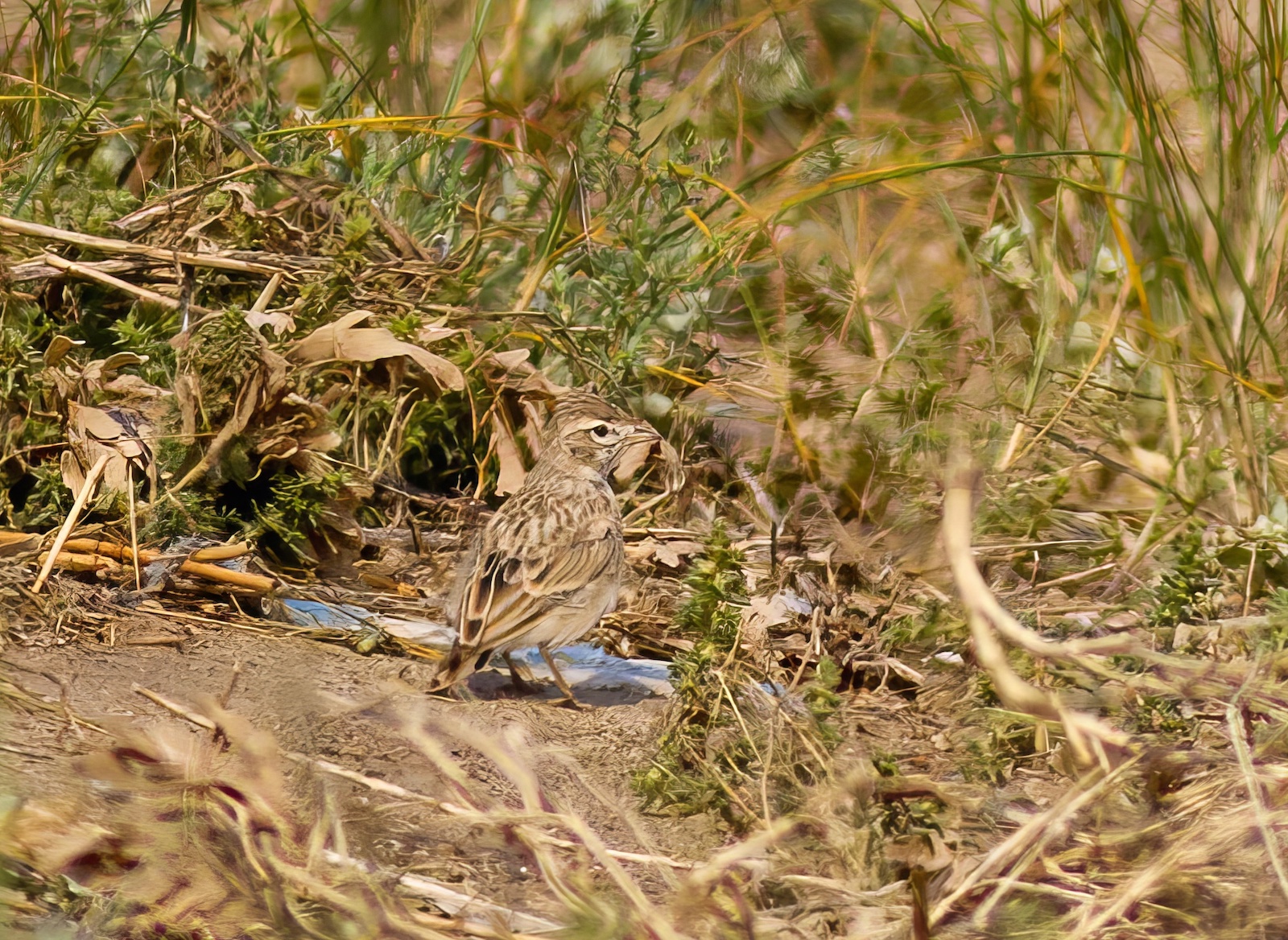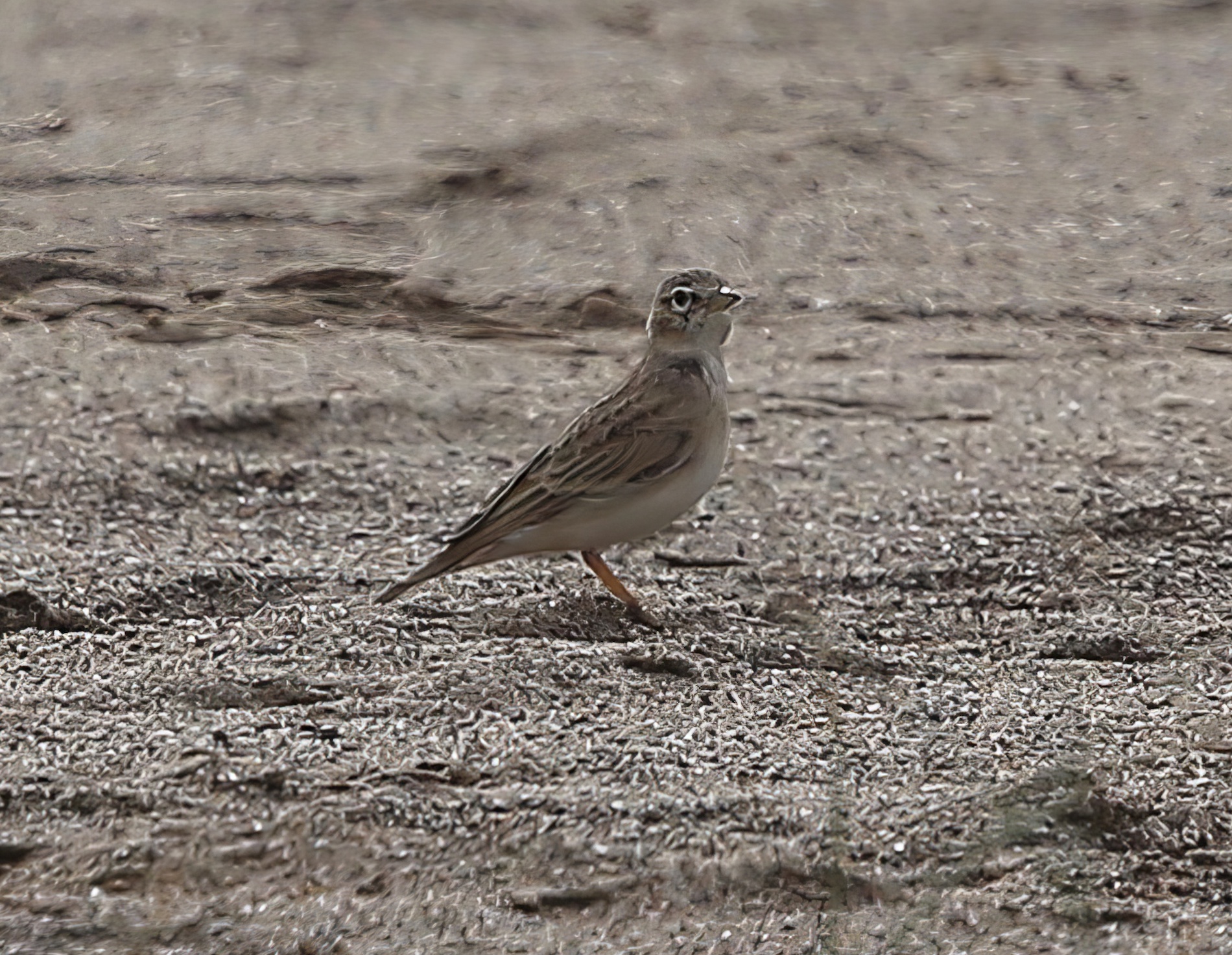Greater Short-toed Lark Calandrella brachydactyla


The first record was at Gibraltar Point NNR in September 1971 and the greyish plumage tones suggested it belonged to one of the (numerous) eastern races. There were probably five other autumn records in Britain that year one of which, Fair Isle September 27th-28th, was also a greyish, eastern bird. There have been only two records since, both autumn birds, in October 1991 and August-September 2013.
The species ceased to be considered by BBRC in 1994, by which time there had been 395 British records. White and Kehoe (2020) in the latest ‘Report on Scarce Migrants in Britain’ reported the annual average number of records as between 17-27 over the three decades 1990-1999 to 2010-2018. This inconspicuous small lark can easily be overlooked in the expanses of ploughed fields and expansive saltmarshes in the county and is likely to be under-recorded. It’s status in Lincolnshire contrasts sharply with its frequency in neighbouring Norfolk where there have been 12 records 2011-2018 alone.
| Site | First date | Last date | Count | Notes |
| Gibraltar Point NNR | 18/09/1971 | 26/09/1971 | 1 | One of the greyish eastern races |
| Inner Dowsing Tower, Mablethorpe | 16/06/1986 | 1 | ||
| Gibraltar Point NNR | 13/10/1991 | 20/10/1991 | 1 | |
| Gibraltar Point NNR | 25/08/2013 | 01/09/2013 | 1 |
Finder’s report: Greater Short-toed Lark at Gibraltar Point, September 18th-26th 1971, first county record.
by E. J. Mackrill, R. L. Swann, R. B. Wilkinson, C. E. Jonson et al.
Note: this account is taken from the original Rarities Committee submissions from several observers. The RC noted that this inconspicuous small lark can easily be overlooked and used to be considered a great rarity, but since 1958 it has been recorded annually. Its traditional Fair Isle and Shetland appearances are now rivalled by those in Scilly where an increased number of autumn observers is certainly a factor in its frequent discovery. Once again autumn records outnumbered those in spring. The Lincolnshire and autumn Fair Isle birds were of the greyish eastern type.
Circumstances
A slim, very pale sandy-grey bird about the same size as the Meadow Pipits with which it was associating. In direct comparison with individual pipits, it looked slightly longer. When first seen on 18th stance was horizontal, lower than Meadow Pipit, it occasionally squatted, almost disappearing in the short saltmarsh vegetation, mainly Sueda maritima. It was feeding constantly, flicking its head amongst the vegetation. When approached too closely it stood upright and ran rapidly. Similar behaviour noted on 19th, but on 20th it was much more active and running about. It flew around with the pipits when the flock was disturbed, sometimes disappearing several hundred yards down the saltmarsh before returning to the same feeding area. It called constantly in flight, a short, distinctive lark-like ‘trrip-trrip’. It was seen every day until 23rd and was last recorded on September 26th. In the latter period it continued to be very active, running frequently and standing upright to look around. It also fluffed its feathers making it look less slim.
Description
Back and rump - sandy-grey, slightly darker streaking on the back. Streaking was more noticeable when observed at close quarters later in the period.
Head – the crown had fine dark streaks on a pale background, made it look slightly darker than mantle in good light and at close quarters but otherwise it appeared uniform with the mantle. Noticeably white superciliary stripe, paler in colour than any other part of the plumage in bright sunlight, but less noticeable in cloudy conditions. Faint, whitish chin stripe noticed. Dark patch behind eye. Pale cheek.
Greater coverts - broad pale edges to darker centres created a noticeable wing-bar.
Median coverts – these looked uniform with the rest of the upper parts at a distance but CEJ and RLS, observing the bird at close quarters, noted darker centres.
Primaries and secondaries – Dark centres, darker than the greater coverts, with broad sandy-grey margins to outer webs particularly noticeable on inner primaries and secondaries, creating a wing panel effect.
Scapulars – pale, very slightly streaked.
Breast – pale buffish, unstreaked, no breast patches seen at any time.
Belly – whitish, unstreaked.
Tail – looked short when the bird was in flight, shorter than Meadow Pipits, dark on the underside. White outer feathers noted as the bird landed. Sandy-grey above when the bird was on the ground.
Wings in flight – silver-greyish on the underside, contrasting with dark underside to the tail.
Legs – very pale flesh colour.
Bill – colour difficult to discern but did not contrast with head colours. Thicker at base than Meadow Pipits.
(Account as per new Birds of Lincolnshire (2021), included October 2022)

